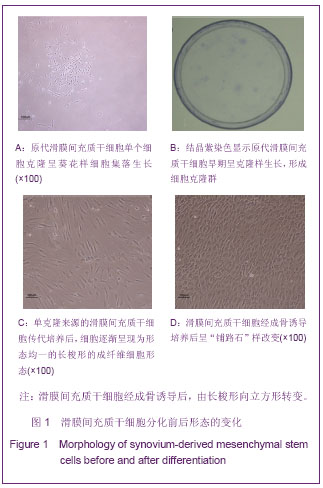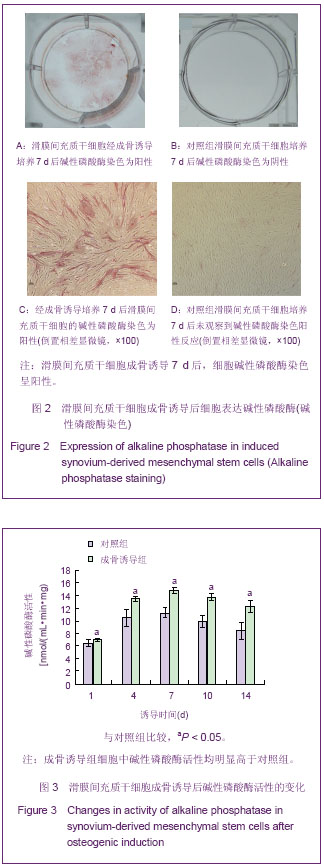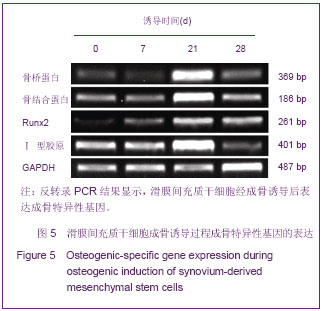| [1] Dimitriou R, Jones E, McGonagle D, et al. Bone regeneration: current concepts and future directions. BMC Med. 2011;9:66.
[2] Salgado AJ, Coutinho OP, Reis RL. Bone tissue engineering: state of the art and future trends. Macromol Biosci. 2004;4(8): 743-765.
[3] Pittenger MF. Mesenchymal stem cells from adult bone marrow. Methods Mol Biol. 2008;449:27-44.
[4] 王晓锋,吴岩.骨组织工程中干细胞的研究与应用[J].中国组织工程研究,2013,17(19):3558-3565.
[5] Lodi D, Iannitti T, Palmieri B. Stem cells in clinical practice: applications and warnings. J Exp Clin Cancer Res. 2011; 30:9.
[6] Chen FH, Tuan RS. Mesenchymal stem cells in arthritic diseases. Arthritis Res Ther. 2008;10(5):223.
[7] de Peppo GM, Sjovall P, Lennerås M, et al. Osteogenic potential of human mesenchymal stem cells and human embryonic stem cell-derived mesodermal progenitors: a tissue engineering perspective. Tissue Eng Part A. 2010; 16(11):3413-3426.
[8] 林昭伟,李奇.骨髓间充质干细胞在骨缺损修复中的应用[J].中国组织工程研究,2012,16(49):9271-9275.
[9] Sakaguchi Y, Sekiya I, Yagishita K, et al. Comparison of human stem cells derived from various mesenchymal tissues: superiority of synovium as a cell source. Arthritis Rheum. 2005; 52(8):2521-2529.
[10] Kurth T, Hedbom E, Shintani N, et al. Chondrogenic potential of human synovial mesenchymal stem cells in alginate. Osteoarthritis Cartilage. 2007;15(10):1178-1189.
[11] Koga H, Shimaya M, Muneta T, et al. Local adherent technique for transplanting mesenchymal stem cells as a potential treatment of cartilage defect. Arthritis Res Ther. 2008;10(4):R84.
[12] Futami I, Ishijima M, Kaneko H, et al. Isolation and characterization of multipotential mesenchymal cells from the mouse synovium. PLoS One. 2012;7(9):e45517.
[13] 芮云峰,王友,汤亭亭,等.膝关节滑膜间质干细胞分离、培养及其多向分化潜能特性的研究[J].中华骨科杂志,2009,29(4):352-359.
[14] Rui YF, Lui PP, Lee YW, et al. Higher BMP receptor expression and BMP-2-induced osteogenic differentiation in tendon-derived stem cells compared with bone-marrow-derived mesenchymal stem cells. Int Orthop. 2012;36(5):1099-1107.
[15] Wieland HA, Michaelis M, Kirschbaum BJ, et al. Osteoarthritis-an untreatable disease? Nat Rev Drug Discov. 2005;4(4):331-344.
[16] Buckwalter JA, Saltzman C, Brown T. The impact of osteoarthritis: implications for research. Clin Orthop Relat Res. 2004;(427 Suppl):S6-15.
[17] Eyigor S, Hepguler S, Sezak M, et al. Effects of intra-articular hyaluronic acid and corticosteroid therapies on articular cartilage in experimental severe osteoarthritis. Clin Exp Rheumatol. 2006;24(6):724.
[18] Karatosun V, Unver B, Ozden A, et al. Intra-articular hyaluronic acid compared to exercise therapy in osteoarthritis of the ankle. A prospective randomized trial with long-term follow-up. Clin Exp Rheumatol. 2008;26(2):288-294.
[19] Schroeppel JP, Crist JD, Anderson HC, et al. Molecular regulation of articular chondrocyte function and its significance in osteoarthritis. Histol Histopathol. 2011;26(3):377-394.
[20] Vandenabeele F, De Bari C, Moreels M, et al. Morphological and immunocytochemical characterization of cultured fibroblast-like cells derived from adult human synovial membrane. Arch Histol Cytol. 2003;66(2):145-153.
[21] Owen TA, Aronow M, Shalhoub V, et al. Progressive development of the rat osteoblast phenotype in vitro: reciprocal relationships in expression of genes associated with osteoblast proliferation and differentiation during formation of the bone extracellular matrix. J Cell Physiol. 1990;143(3):420-430.
[22] Pittenger MF, Mackay AM, Beck SC, et al. Multilineage potential of adult human mesenchymal stem cells. Science. 1999;284(5411):143-147.
[23] Termine JD, Kleinman HK, Whitson SW, et al. Osteonectin, a bone-specific protein linking mineral to collagen. Cell. 1981; 26(1 Pt 1):99-105.
[24] Giachelli CM, Steitz S. Osteopontin: a versatile regulator of inflammation and biomineralization. Matrix Biol. 2000;19(7): 615-622.
[25] Zhang Y, Xie RL, Croce CM, et al. A program of microRNAs controls osteogenic lineage progression by targeting transcription factor Runx2. Proc Natl Acad Sci U S A. 2011; 108(24):9863-9868.
[26] Keerthi N, Chimutengwende-Gordon M, Sanghani A, et al. The Potential of Stem Cell Therapy for Osteoarthritis and Rheumatoid Arthritis. Curr Stem Cell Res Ther. in press.
[27] Barry F, Murphy M. Mesenchymal stem cells in joint disease and repair. Nat Rev Rheumatol. in press.
[28] Gupta PK, Das AK, Chullikana A, et al. Mesenchymal stem cells for cartilage repair in osteoarthritis. Stem Cell Res Ther. 2012;3(4):25.
[29] De Bari C, Dell'Accio F, Tylzanowski P, et al. Multipotent mesenchymal stem cells from adult human synovial membrane. Arthritis Rheum. 2001;44(8):1928-1942.
[30] Yoshimura H, Muneta T, Nimura A, et al. Comparison of rat mesenchymal stem cells derived from bone marrow, synovium, periosteum, adipose tissue, and muscle. Cell Tissue Res. 2007;327(3):449-462.
[31] Labusca L, Zugun-Eloae F, Shaw G, et al. Isolation and phenotypic characterisation of stem cells from late stage osteoarthritic mesenchymal tissues. Curr Stem Cell Res Ther. 2012;7(5):319-328. |




.jpg)
.jpg)